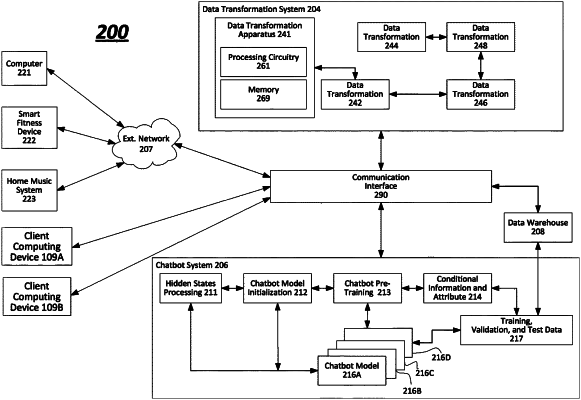| CPC G06F 40/30 (2020.01) [G06F 16/283 (2019.01); G06F 40/205 (2020.01); G06N 20/00 (2019.01)] | 20 Claims |

|
1. An apparatus to train a chatbot model, comprising:
a memory storing programming code; and
processing circuitry, coupled to the memory, wherein the processing circuitry has an input and an output, and is operable to execute the stored programming code that causes the processing circuitry to perform functions, including functions to:
receive first data and a desired result, the first data comprising non-dialog data from a chatbot training data structure, the desired result comprising a data structure based on the non-dialog data and the data type of the non-dialog data;
infer an inferred result, based on the first data via a chatbot model, the chatbot model trained with a standardized chain of values including individual relative probability values indicating a probability of certain data elements having a determined correspondence and respective relationship probability values indicating a probability of a relationship between respective data elements of the certain data elements having the determined correspondence, the standardized chain of values generated based on transformed data, the transformed data based on the non-dialog data;
determine a degree of accuracy for the chatbot model by comparison of the inferred result from the chatbot model to the desired result;
continue training of the chatbot model if the degree of accuracy is less than a threshold degree of accuracy; and
generate information to exchange with a user based on information input by the user if the degree of accuracy is greater than or equal to the threshold degree of accuracy.
|